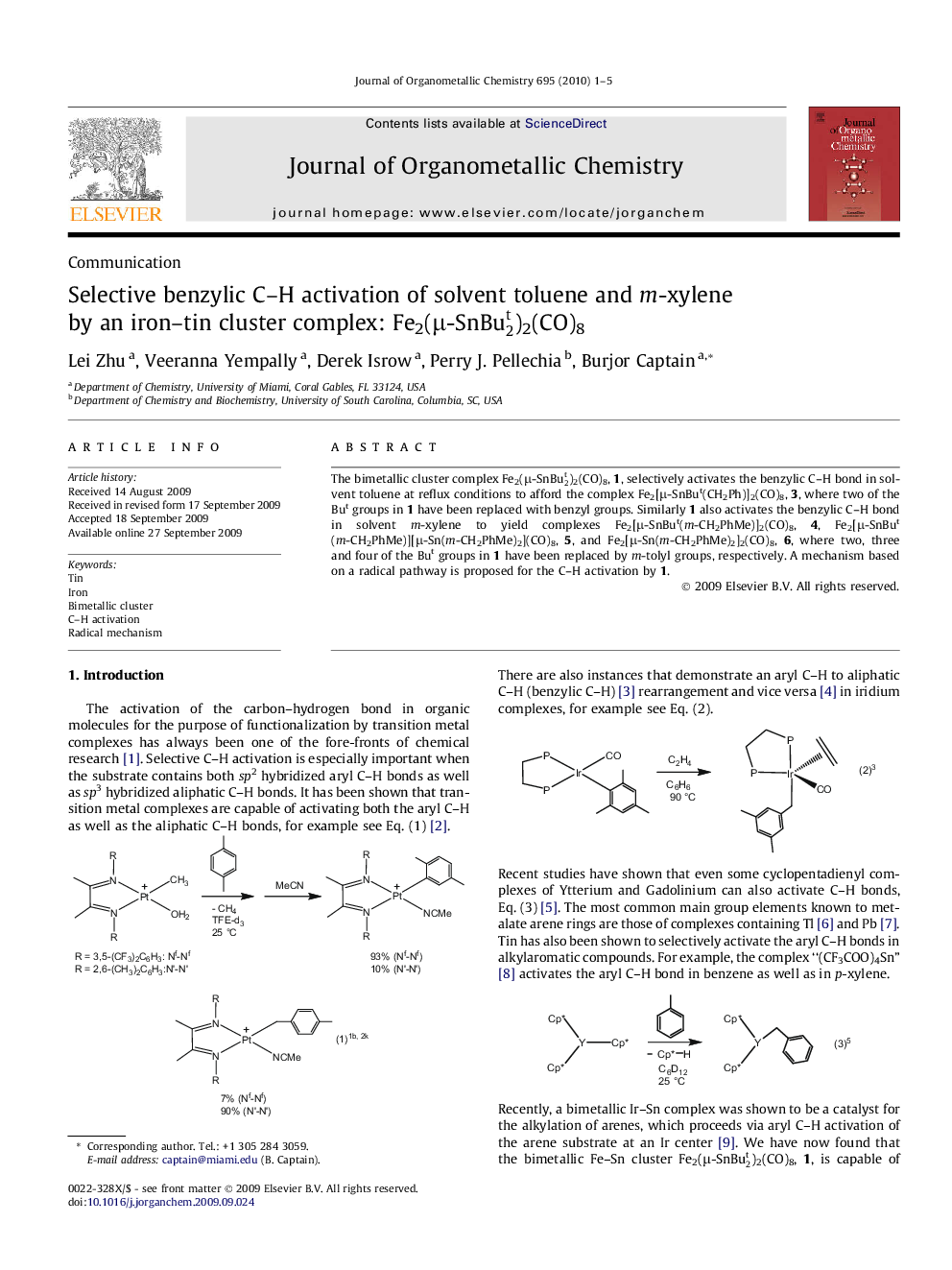| کد مقاله | کد نشریه | سال انتشار | مقاله انگلیسی | نسخه تمام متن |
|---|---|---|---|---|
| 1327106 | 977464 | 2010 | 5 صفحه PDF | دانلود رایگان |

The bimetallic cluster complex Fe2(μ-SnBu2t)2(CO)8, 1, selectively activates the benzylic C–H bond in solvent toluene at reflux conditions to afford the complex Fe2[μ-SnBut(CH2Ph)]2(CO)8, 3, where two of the But groups in 1 have been replaced with benzyl groups. Similarly 1 also activates the benzylic C–H bond in solvent m-xylene to yield complexes Fe2[μ-SnBut(m-CH2PhMe)]2(CO)8, 4, Fe2[μ-SnBut(m-CH2PhMe)][μ-Sn(m-CH2PhMe)2](CO)8, 5, and Fe2[μ-Sn(m-CH2PhMe)2]2(CO)8, 6, where two, three and four of the But groups in 1 have been replaced by m-tolyl groups, respectively. A mechanism based on a radical pathway is proposed for the C–H activation by 1.
The bimetallic cluster Fe2(μ-SnBu2t)2(CO)8, 1, reacts with solvent toluene and m-xylene to yield benzylic C–H activated products, where the But groups in 1 have been replaced by benzyl or m-tolyl groups. A radical mechanism for this reaction is proposed.Figure optionsDownload as PowerPoint slide
Journal: Journal of Organometallic Chemistry - Volume 695, Issue 1, 1 January 2010, Pages 1–5